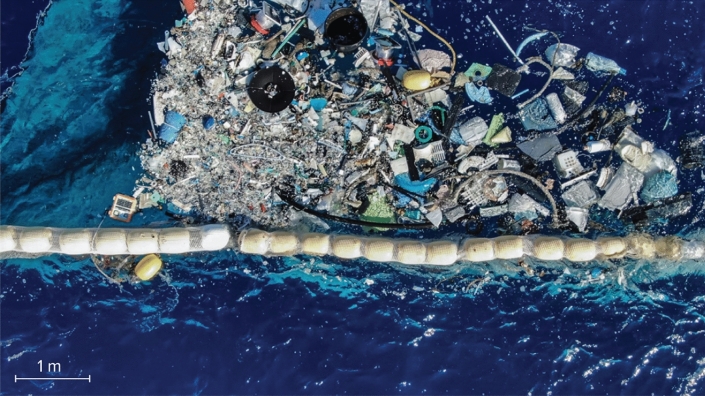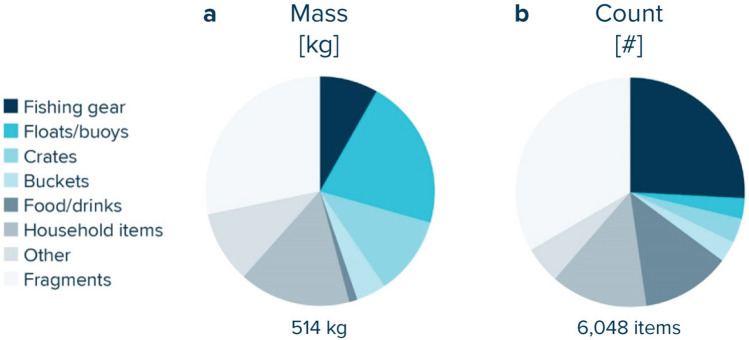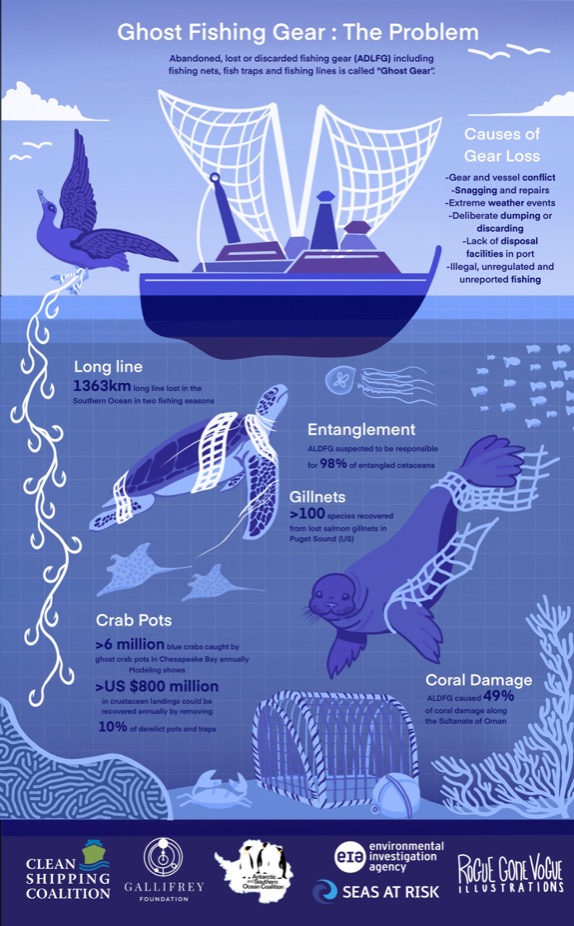 Offshore tests for the recovery of floating plastics conducted by The Ocean Cleanup in the North Pacific Garbage Patch in 2019; photograph by Fedde Poppenk
Offshore tests for the recovery of floating plastics conducted by The Ocean Cleanup in the North Pacific Garbage Patch in 2019; photograph by Fedde Poppenk
Laurent Lebreton (The Ocean Cleanup, Rotterdam, The Netherlands) and colleagues have published open access in the journal, Scientific Reports on the origin of floating plastic in the North Pacific Garbage Patch.
The paper’s abstract follows:
“The subtropical oceanic gyre in the North Pacific Ocean is currently covered with tens of thousands of tonnes of floating plastic debris, dispersed over millions of square kilometres. A large fraction is composed of fishing nets and ropes while the rest is mostly composed of hard plastic objects and fragments, sometimes carrying evidence on their origin. In 2019, an oceanographic mission conducted in the area, retrieved over 6000 hard plastic debris items > 5 cm. The debris was later sorted, counted, weighed, and analysed for evidence of origin and age. Our results, complemented with numerical model simulations and findings from a previous oceanographic mission, revealed that a majority of the floating material stems from fishing activities. While recent assessments for plastic inputs into the ocean point to coastal developing economies and rivers as major contributors into oceanic plastic pollution, here we show that most floating plastics in the North Pacific subtropical gyre can be traced back to five industrialised fishing nations, highlighting the important role the fishing industry plays in the solution to this global issue.”

Composition of hard plastic debris harvested from the North Pacific Garbage Patch in 2019. Relative (a) mass and (b) numerical distribution of hard plastic items > 5 cm only (e.g., excluding nets and ropes)
In Freda Kreier’s discussion of the paper in Nature this month, the author expands on the paper’s findings that show between 75 and 86% of the large floating plastic pieces collected for the survey in the North Pacific Garbage Patch can be attributed to fishing vessels originating from just five regions of the globe.
REFERENCE
Lebreton L., Royer S.J., Peytavin A., Strietman W.J., Smeding-Zuurendonk I., Egger M. Industrialised fishing nations largely contribute to floating plastic pollution in the North Pacific subtropical gyre. Scientific Report. 2022. Sep 1;12(1):12666.https://doi.org/10.1038/s41598-022-16529-0
Images courtesy of the authors and journal, Scientific Reports, and are permitted for publication under the creative commons licence, http://creativecommons.org/licenses/by/4.0/.
Plastic Pollution has been chosen by ACAP as the theme to mark the fourth World Albatross Day, to be celebrated on June 19, 2023. Albatrosses are affected by a range of pollutants, of which plastics, whether ingested and then fed to chicks or causing entanglements, are certainly the most visible and well known to the public. However, albatrosses face other significant pollutants, including heavy metals, (such as mercury) and POPs (persistent organic pollutants, such as insecticides). ACAP will therefore include these and other categories of pollutants along with plastics in promoting “WAD2023”.
Ghost fishing gear has also been highlighted recently by the Antarctic and Southern Ocean Coalition (ASOC) who have released an educational infographic poster on the problem. The poster is available to download at the ASOC website. 
10 October 2022

 English
English  Français
Français  Español
Español